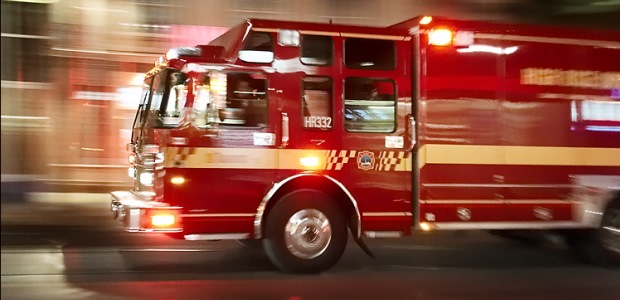
NIOSH Research Pinpoints Need for Firefighters' PPE, Apparatus Changes
A new database developed by NIOSH shows that PPE fit can compromise performance and firefighters in turnout gear do not fit well in today's fire apparatus.
NIOSH announced it has developed the first database of firefighter body measurements and shared some of the implications of this new anthropometric information for the safety for personnel and their fire apparatus and PPE. According to the agency, during the past six years NIOSH researchers have worked with the firefighter community, firefighter apparatus manufacturers, and the National Fire Protection Association standards committee to conduct the first national survey of firefighter body dimension information, with 951 male and female firefighters from across the United States participating.
"Before our research the majority of body dimension data available was from military personnel collected several decades ago, which does not accurately represent today's workers, who are much more diverse in age, gender, and ethnicity," said Dr. Hongwei Hsiao, principal investigator and branch chief for the Division of Safety Research at NIOSH. "We also know that workers have unique sizes and shapes that vary by occupation."
They collected 71 body dimension measurements and used the data to develop the database to assist fire apparatus and equipment manufacturers in updating the designs of their seat belts, fire truck cabs, gloves, boots, seats, SCBA carrying straps, and protective clothing. The database has been shared with 17 firefighter associations and firefighter apparatus manufacturers, as well as fire service partners, and it's now available to the public on the NIOSH website. Already a large metropolitan fire department has retrofitted its older fire apparatus with a new seat belt system because of the data, and the new system aligns with a new NFPA specification for seat belt length, configuration, and retraction, NIOSH reported.
Important findings from the database include these, according to NIOSH:
- Firefighters have different body sizes than the U.S. population. On average, male firefighters are taller and have larger upper-body builds than the general U.S. population.
- PPE fit can compromise performance. About 25 percent of the men and half of the women reported problems with the fit or bulkiness of structural firefighting gloves.
- Firefighters in turnout gear do not fit well in today's fire apparatus.
Approximately 100 firefighters die in the United States per year and about 72,000 sustain injuries, according to the agency.
"The data obtained in this survey provide the first available U.S. national firefighter anthropometric information needed for updating ergonomic and safety specifications for fire apparatus and firefighter protective equipment," NIOSH Director Dr. John Howard said. "We know that design changes to fire apparatus and protective equipment, based on the data we collected, can keep firefighters safe whether they are on their way to the scene of a fire or in the line of duty."
"We're delighted that the data is being used to support design changes and look forward to possible future changes to reduce the risk of injury and death among firefighters," Hsiao said.